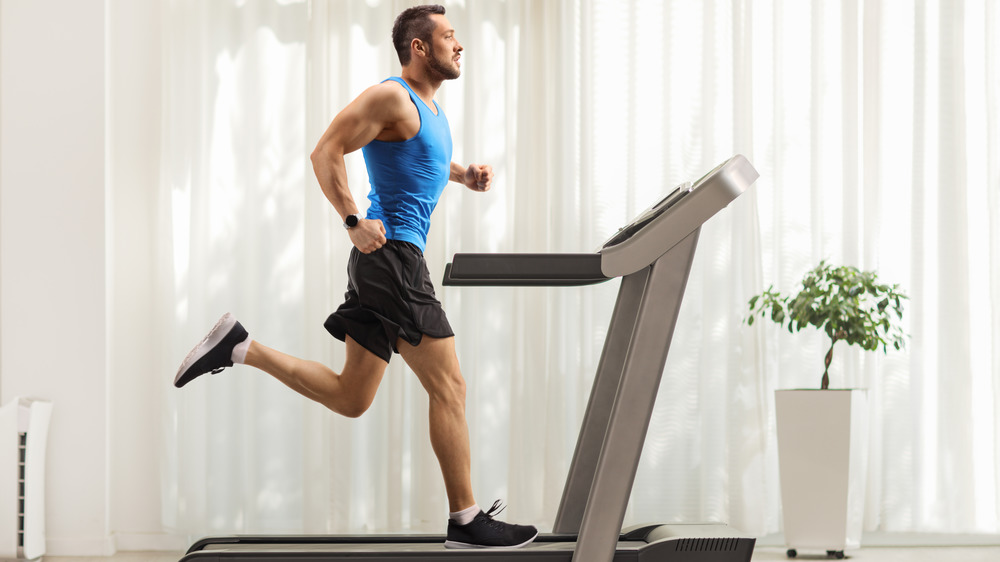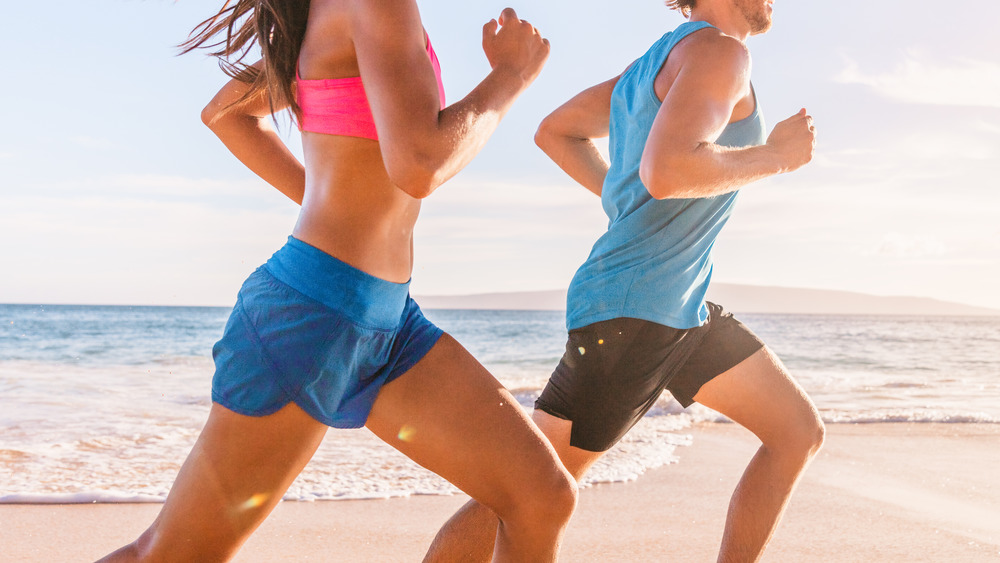This Is What You Should Do With Your Arms When You Run
When you're on a run, have you ever focused on how your arms are moving, and wondered if your upper body was moving the way it should? Maybe you realized you were swinging your arms dramatically, or keeping them stiffly locked to your sides. Maybe you started to feel tension in your shoulders or upper back, or noticed that the person running next to you was giving you a weird look as you flailed your arms side to side.
So that you can stop feeling awkward and ungainly, we have a few tips for how to hold your arms when you're running. Start by releasing tension in your upper body, especially your shoulders, while standing tall. Aim to keep your hands at waist level, with a 90-degree bend in your elbows. As you swing your arms, using your shoulder joint as the top of your pendulum, let your arms swing forward and backward, coming slightly towards the center of your body as they come forward, but not crossing over to the other side (via Verywell Fit). Let your timing naturally sync to your arms and legs — your body will know what to do!
What if trying to change my arms feels weird?
Ultimately, though, it's important to trust your body and let your arms relax into what feels natural rather than trying to emulate what you've seen Olympic marathoners doing. If your running form feels good to you, don't worry about how your arms look. Remember that famous running scene from Friends? It turns out, Phoebe was right. Research has shown that the most efficient running stride, especially for novice runners, is the one that you naturally default to (via Science Daily). Even if you're potentially a bit less technically efficient, the work it will take to change your stride can be just as energy-sucking, and can make your run feel a lot less fun. Finishing a run feeling stiff and fatigued from trying to adapt to a new form may even lead you to slump over and hunch your upper body, which is another posture problem (via Verywell Fit).
"Many people are advocating for various 'optimal' running forms, but this study shows even novice runners shouldn't try to run any different than their body naturally does," USA Track and Field consultant Iain Hunter told Science Daily. "Enjoy running and worry less about what things look like."

